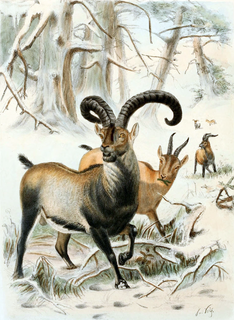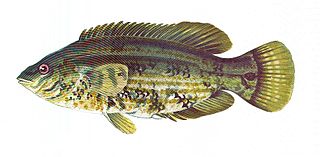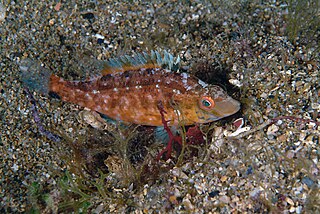 W
WSymphodus is a genus of wrasses native to the eastern Atlantic Ocean and the Mediterranean Sea.
 W
WButhus ibericus is a scorpion species found in western Spain and Portugal.
 W
WThe Greek tortoise, also known commonly as the spur-thighed tortoise, is a species of tortoise in the family Testudinidae. Testudo graeca is one of five species of Mediterranean tortoises. The other four species are Hermann's tortoise, the Egyptian tortoise, the marginated tortoise, and the Russian tortoise. The Greek tortoise is a very long-lived animal, achieving a lifespan upwards of 125 years, with some unverified reports up to 200 years.
 W
WHyla molleri, also known as the Iberian tree frog or Moller's tree frog, is a species of frog in the family Hylidae, endemic to the Iberian Peninsula and southwesternmost France. It was formerly treated as a subspecies of Hyla arborea, but was split based on genetic differences. The specific name molleri honours Adolphe F. Moller (1842–1920), a Portuguese botanist.
 W
WIberian gudgeon is a species of gudgeon, a small freshwater in the family Cyprinidae. It is widespread only in the Iberian Peninsula where it is indigenous in the Ebro and Bidasoa drainage, and in France in the Adour drainage, as well as Andorra. It has been introduced throughout the Iberian Peninsula, including Portugal, It is a freshwater demersal fish, up to 11.9 cm long.
 W
WThe Iberian nase is a species of freshwater fish in the family Cyprinidae. It is found in Portugal and in Spain. Its natural habitats are rivers and intermittent rivers.
 W
WInsulivitrina mascaensis is a species of gastropod in the Vitrinidae family. It is endemic to Spain.
 W
WIris oratoria, known by the common name Mediterranean mantis or iris mantis, is a widespread species of praying mantis native to Europe. It is found as an introduced species in the Middle East, Western Asia and the United States. Iris oratoria invaded southern California in the 1930s and seems to be spreading.
 W
WThe Pyrenean desman is a small semiaquatic, globally threatened mammal related to moles and shrews, and, along with the Russian desman , is one of the two extant members of the tribe Desmanini. The species occurs in north and central parts of Spain and Portugal, French Pyrenees, and Andorra, but severe range contractions have been documented across its geographic distribution.
 W
WThe Pyrenean ibex, Aragonese and Spanish common name bucardo, Catalan common name herc and French common name bouquetin was one of the four subspecies of the Iberian ibex or Iberian wild goat, a species endemic to the Pyrenees. Pyrenean ibex were most common in the Cantabrian Mountains, Southern France, and the northern Pyrenees. This species was common during the Holocene and Upper Pleistocene, during which their morphology, primarily some skulls, of the Pyrenean ibex was found to be larger than other Capra subspecies in southwestern Europe from the same time.
 W
WSqualius valentinus, commonly known as the Valencia chub and the Levantine bagra, is a species of freshwater fish in the carp family Cyprinidae. It was first isolated from the Turia River in Valencia, hence its name. It is considered endangered. This species is differentiated from its cogeneratesa by having eight branched rays in its dorsal fin; eight branched rays in its anal fin; two rows of pharyngeal teeth on both sides possessing 2 and 5 teeth ; a wide caudal peduncle; its number of gill rakers; the number of scales in its lateral line; the number of scale rows above the latter; by possessing three scale rows below it; by having thirty-nine vertebrae ; showing large 4th and 5th infraorbital bones; a maxilla with a very distinctlt marked anterior process; exhibiting a frontal bone expanded at the middle; a wide neurocranium bone; the lower branch of the pharyngeal bone being robust; a large and narrow urohyal; as well as genetic differences (allozymes).
 W
WBaillon's wrasse is a species of wrasse native to the eastern Atlantic Ocean from the British Isles and Belgium to Mauritania and the western Mediterranean Sea along the coast of Spain and around the Balearic Islands. This species inhabits areas with plentiful weed growth or around rocks at depths from 1 to 50 m. It can reach 23 cm (9.1 in) in standard length, though usually not exceeding 18 cm (7.1 in). The British Record for the heaviest fish is 285 grams caught in Poole Bay, Dorset on 3 September 2018 by David Lynes It is caught for human consumption in artisanal fisheries.
 W
WThe grey wrasse is a species of wrasse native to the eastern Atlantic Ocean and along the coasts of the Mediterranean Sea to the Black Sea. It inhabits coastal waters, preferring beds of eelgrass at depths from 1 to 20 m. It can reach 16 cm (6.3 in) in total length, though most do not exceed 8 cm (3.1 in). It is important to local peoples as a food fish and is popular as a game fish. It can also be found in the aquarium trade.